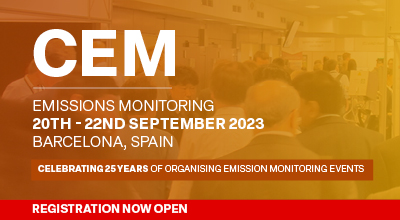| Abstract Title: | Online monitoring of Odour Unit emissions and odour sources identification by using a new generation of gas and odours analysers (IOMS – Instrumental Odor Measurement System) for industrial sites / An illustration with an Incinerator site Improves Odour Mitigation with Smart Sensors and Environmental Intelligence |
| Presenter Name: | Dr JEAN-CHRISTOPHE MIFSUD |
| Co-authors: | Mrs CLAIRE BARA |
| Company/Organisation: | ELLONA |
| Country: | France |
Abstract Information :
General context : In northern Paris (Saint-Ouen-sur-Seine), one of the largest incinerator in Europe was interested in better assessing on line gas and odours emissions of their operations, aiming at identifying the possible source and situation of possible olfactive nuisances on the neighbours. This waste to energy (WtE) plant known as the ‘L’étoile Verte’ or ‘Green Star’ waste recovery facility, which was originally built in an industrial area, is now surrounded by residential development. This has presented a number of challenges; not least of which is odour. A network of WT1 E nose has therefore been contracted to establish a smart continuous odour and gas monitoring grid, so that the sources of odour can be identified, and improvement measures can be underpinned by scientific data. • The WtE plant is owned by Syctom; the largest European Public Authority in charge of the treatment of waste produced by 6 million inhabitants of the Capital Region of France. With a focus on innovation, Syctom makes waste a resource and optimizes waste recovery channels. As such, Syctom performs a major role in the development of the circular economy and sustainable cities. Green Star plant modernisation : Situated within Les Docks, a 100-hectare eco-district, the owner of the WtE facility, Syctom, is implementing an urban integration project at a cost of €210 million, with completion due in 2024. The project involves construction work, tree planting and the improvement of the flue gas and wastewater treatment processes. In addition, with residents now located just a few meters from the plant, Syctom has installed a network of ELLONA continuous air quality monitoring devices to identify the sources of odour, so that effective mitigation measures can be implemented. ELLONA therefore worked in partnership with the high-performance computing and modelling company NUMTECH to model the complex air flows that take place in the plant and in the surrounding urban environment. Odour management at the Green Star WtE plant : Dynamic Olfactometry (EN 13725:2022- ASTM E679:2019) is the standard and well established technique for odour concentration measurements, however it is not always adapted for big industrials sites which need continuous monitoring and fast results to take the appropriate remediation actions. Additionally, these sites need to have odour sources identification solutions to ensure proper remediation actions or to protect themselves from non-legitimate claims. Also, reports of odour occurrences by local residents help the plant to identify potential sources of odours. However, this process has a number of limitations. For example: some odour instances may go unreported, especially when they occur at night time; some odours may have been created by external sources; and odour is a subjective observation because different odours affect different people in different ways. Nevertheless, the main objective of odour management is to reduce or eliminate the effects of odour on local residents, so their feedback is essential. The ELLONA WT1 gas and odors sensing modules allow not only on line monitoring of Odor Unit and various gas emissions, but also allow odors fingerprint identification. The WT1 combines a range of miniaturized sensors (MEMS MOS, EC, PID...) with AI data processing techniques. A network of various monitoring device of gas and odors WT1 from ELLONA including H2S, mercaptan, NH3, SO2, CO, PID sensors were installed around the plant fence line. The main results of the deployment of IOMS allow: • A better understanding of the sources of olfactory nuisances • Odour levels assessment (real-time): notification thresholds were defined at 500, 750 and 1,000 Distance Odour Units (DOU) triggering alerts and alarms for remediation purposes and anticipate any corrective actions on operations, • Identification of emitting sources based on the odour characterization and the events log, • Odour Characterization (real time): the olfactory nuisances were taught to the WT1 in order to be identified when odour units threshold are reached and quickly implement remediation actions • Odour level data were collected for correlation analysis with operational activities The previous results and the NUMTECH modelling work demonstrate that the continuous monitoring could help the plant to fulfil their expectation in reducing odour intensity, number of complaints and differentiate themselves from near located emissions. The presentation will include, the experimental plan, the description of the technology, the methodology of odor intensity fingerprint identification, and the data processing involved experimental plan , including the training with an expert panel.

